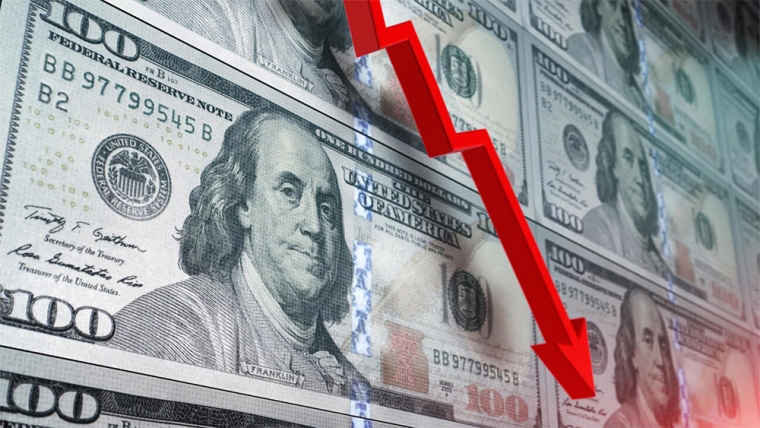
Risk appetite has begun the week on a positive note, with the market taking a sanguine view of developments in the Middle East. Equity markets are higher, oil prices are down 3% and the USD is broadly weaker. US Treasury yields have pushed higher, with nerves ahead of the Treasury’s refunding announcement and a Nikkei report that the BoJ will discuss a further tweak of its yield curve control policy.
Israel began its ground invasion into Gaza over the weekend but this has so far been quite strategic than “full-on” – a more gradual approach than what Israel had vowed in the days after Hamas’s attack. The WSJ reports that Israeli tanks and infantry have pushed into the outskirts of Gaza city in a major advance aimed at encircling the enclave’s biggest population centre.
The less forceful invasion of Gaza than expected has been attributed to a modest lift in risk appetite to start the week. Oil prices are down over 3% , seeing Brent crude back to a USD87 handle. The S&P500 is currently up 0.9%, following the 5% fall over the past two weeks. The Euro Stoxx 600 index closed up 0.4%.
The US Treasuries market remains jittery ahead of a big week on the calendar that will include key labour market data and a Fed policy meeting. But forefront of mind is the US Treasury’s refunding announcement. The Treasury will announce its quarterly borrowing needs at 8am NZ time, followed by the refunding announcement on Wednesday night, which will reveal the breakdown between longer-term and short-term debt.
Relative to last week’s close, the 2-year rate is up 5bps to 5.05% and the 10-year rate is up 6bps to 4.89%. As well as the factors noted above that have contributed to higher yields, the Nikkei reported that at its meeting today the BoJ will discuss a further tweaking of yield curve control, likely allowing the 10-year JGB to temporarily rise above 1%. This triggered a stronger yen, with USD/JPY falling as much as 100pips to just shy of 148.80, before settling back to around 149. The US 10-year rate showed some volatility after the news headline, but with little net change. Higher JGB yields ultimately put upward pressure on long-term global rates to the extent that they incentivise a repatriation of funds back to Japan.
In economic news, German GDP fell 0.1% in Q3, consistent with the prevailing view that the economy is struggling to perform, although the figures were slightly better than expected, including upward revisions to prior data. Still, on a working day adjusted basis, the economy contracted 0.3% y/y. The weaker economy has been a factor in lower inflationary pressure, with Germany’s CPI falling by 0.2% m/m in October, taking the annual figure down to 3.0%, some three-tenths lower than expected and the weakest inflation since June 2021. Spain’s inflation figures also undershot expectations, its headline rate nudging up to 3.5% and core rate falling to 5.2%. The data suggest downside risk on Euro area CPI figures due tonight, and support the ECB’s view to put an end to the tightening cycle.
Against a backdrop of higher US rates, European rates have barely moved, with Germany’s 10-year rate down 1bp and UK’s 10-year rate up 1bp.
Despite higher US rates, the USD is broadly weaker, with higher risk appetite the more dominant force. The USD DXY index is down 0.4% with GBP and EUR making gains of 0.3-0.4%. The AUD has outperformed, up 0.6% to 0.6370, with a stronger than expected retail sales print yesterday adding to the case for an RBA rate hike next week, following signs of stronger underlying inflation. The NZD is up 0.4% to 0.5835 and NZD/AUD continues to grind lower, trading down to 0.9150 this morning.
The domestic rates market had an uneventful session, with global forces driving NZGB yields up 2-3bps. There was some mild steepening of the swaps curve, with the 2-year rate down 1bp to 5.58% and the 10-year rate up 2bps to 5.38%. Since the NZ close, the Australian 10-year bond future is up 7bps in yield terms, which will set the tone for early trading.
In the day ahead, the ANZ NZ business outlook survey should show a further incremental gain in confidence and activity indicators, reflecting the anticipated change of government. We’ll be more interested in the pricing indicators. Globally, there will be a lot to digest, including China PMIs and the BoJ’s policy update during NZ business hours. The prevailing consensus saw the BoJ doing nothing, even in the face of another likely upgrade to inflation projections, but following the Nikkei report some policy adjustment must be give a high chance, with a further likely adjustment to the yield curve control policy. Doing nothing risks sending the yen on a weaker trajectory, which would then require some official intervention to contain the move.
Tonight sees the release of euro area Q3 GDP (expected to be flat), euro area October CPI (to show a further fall in headline and core inflation), the US employment cost index (to remain steady at 1.0% q/q), as well as Canadian monthly GDP, the US Chicago PMI and Conference Board measure of consumer confidence.

We welcome your comments below. If you are not already registered, please register to comment
Remember we welcome robust, respectful and insightful debate. We don't welcome abusive or defamatory comments and will de-register those repeatedly making such comments. Our current comment policy is here.